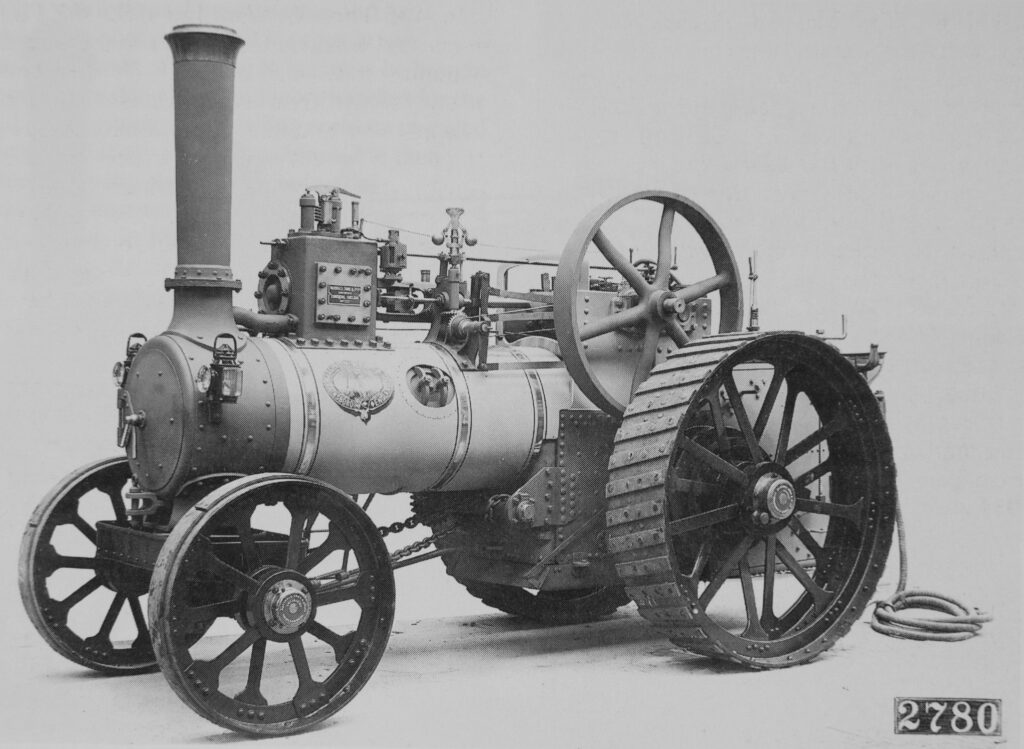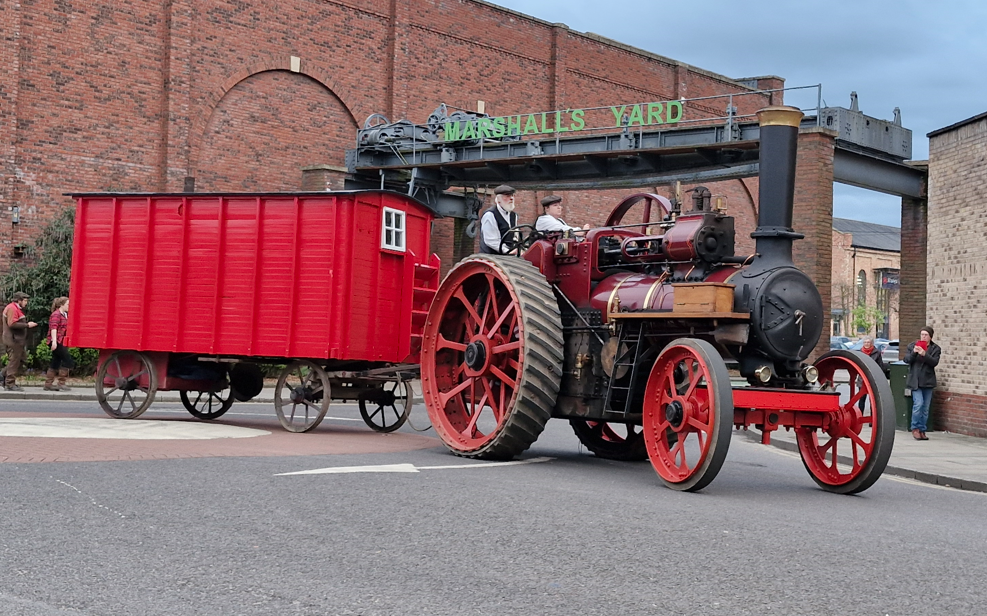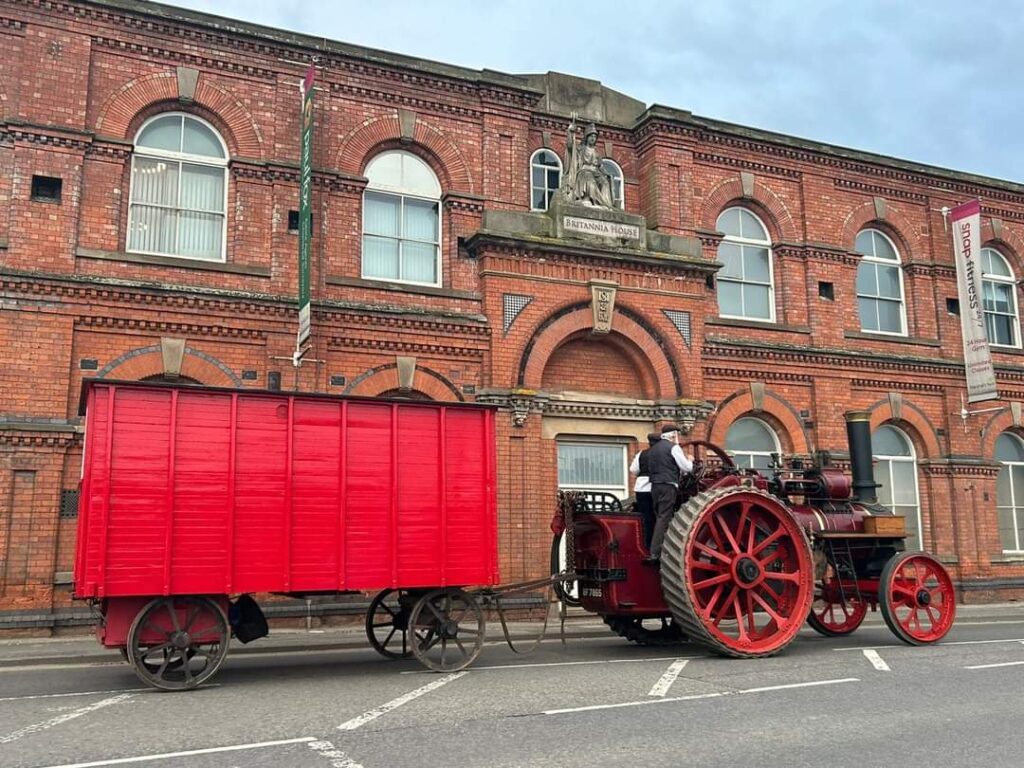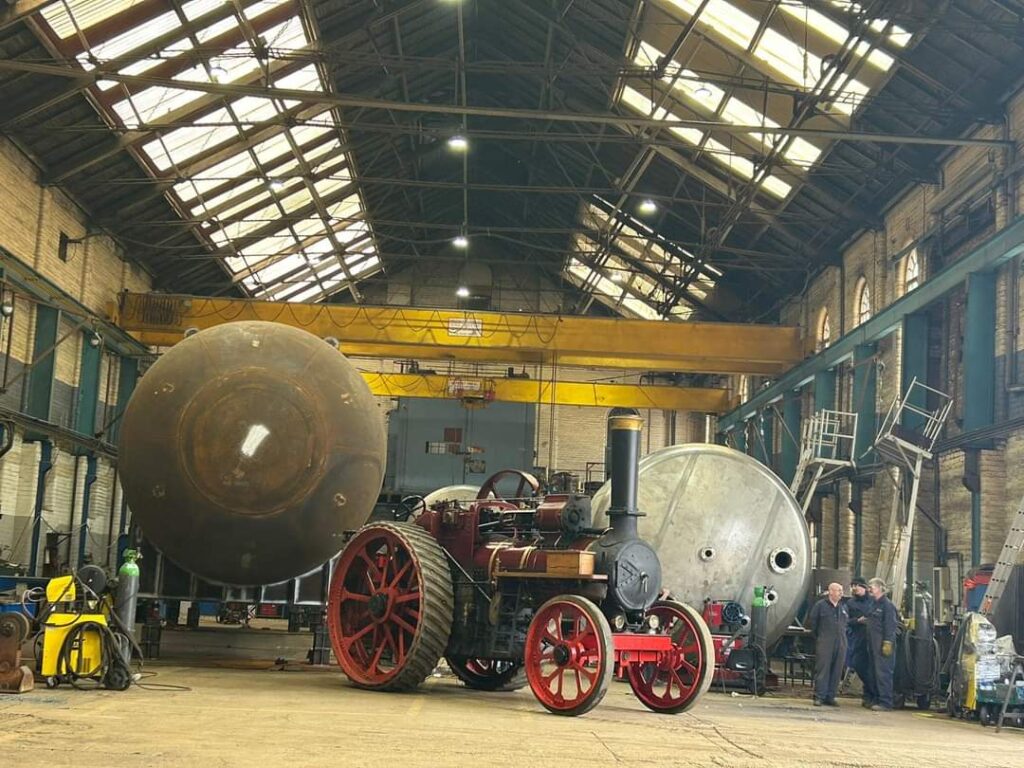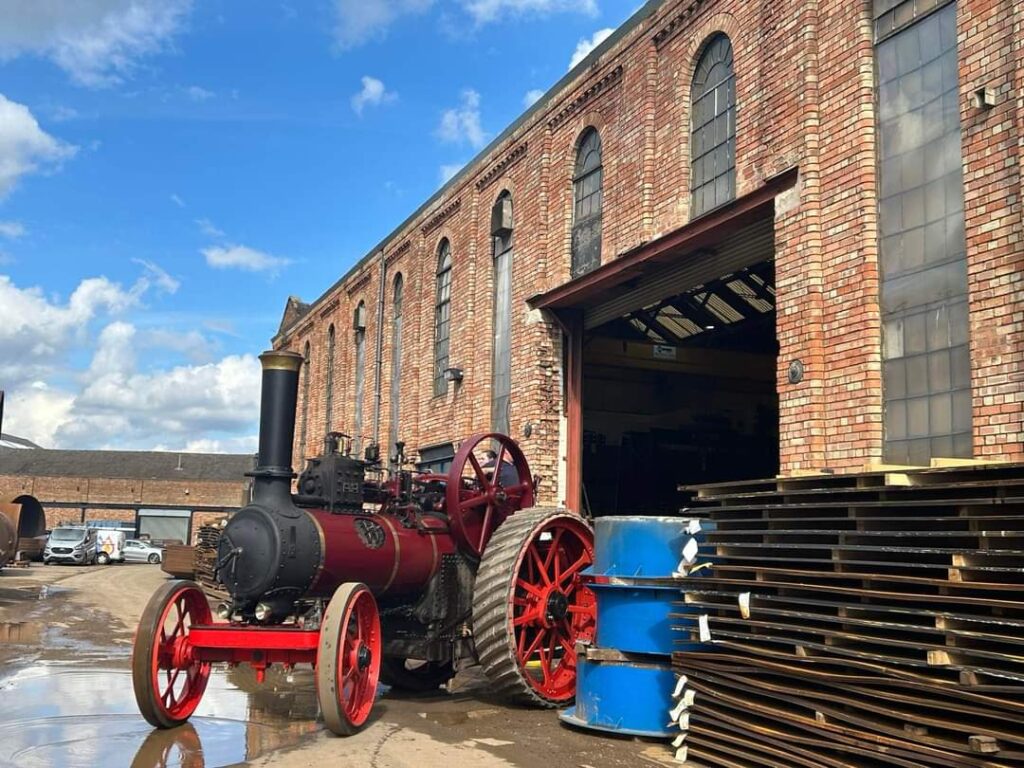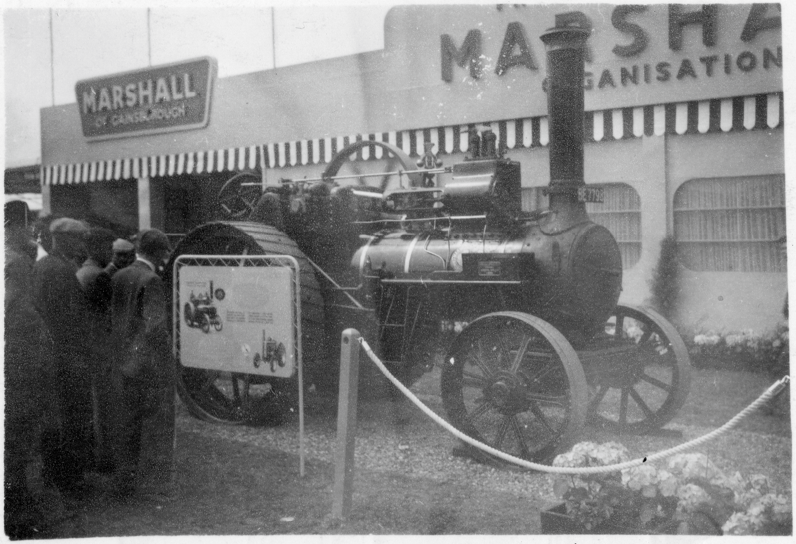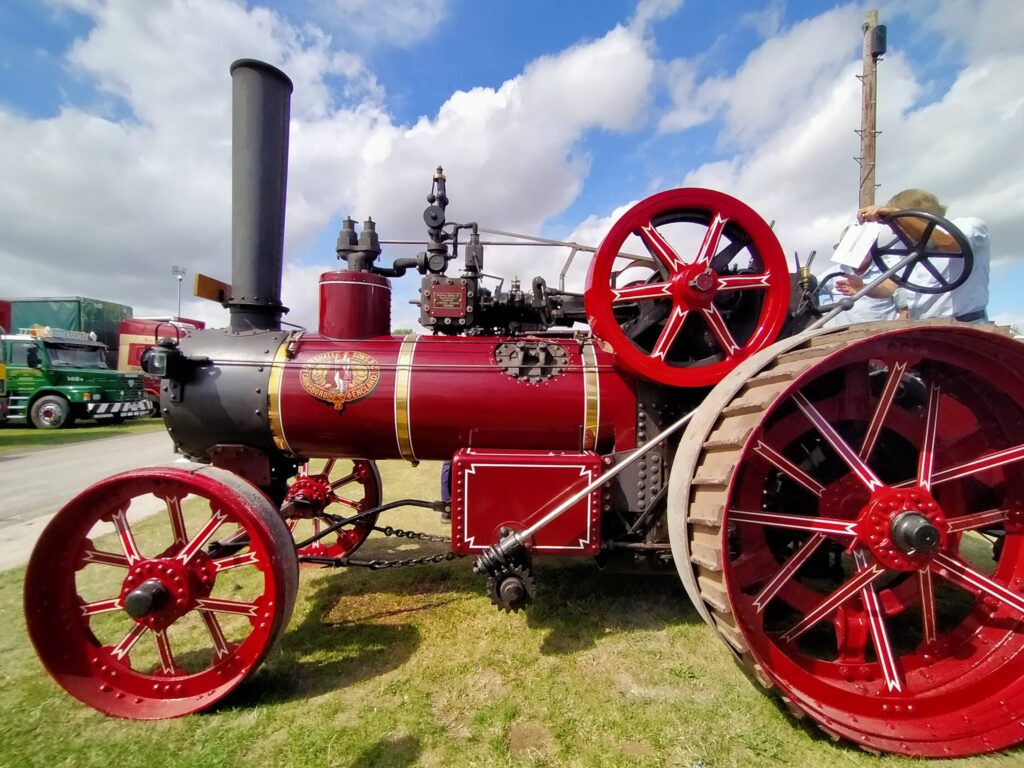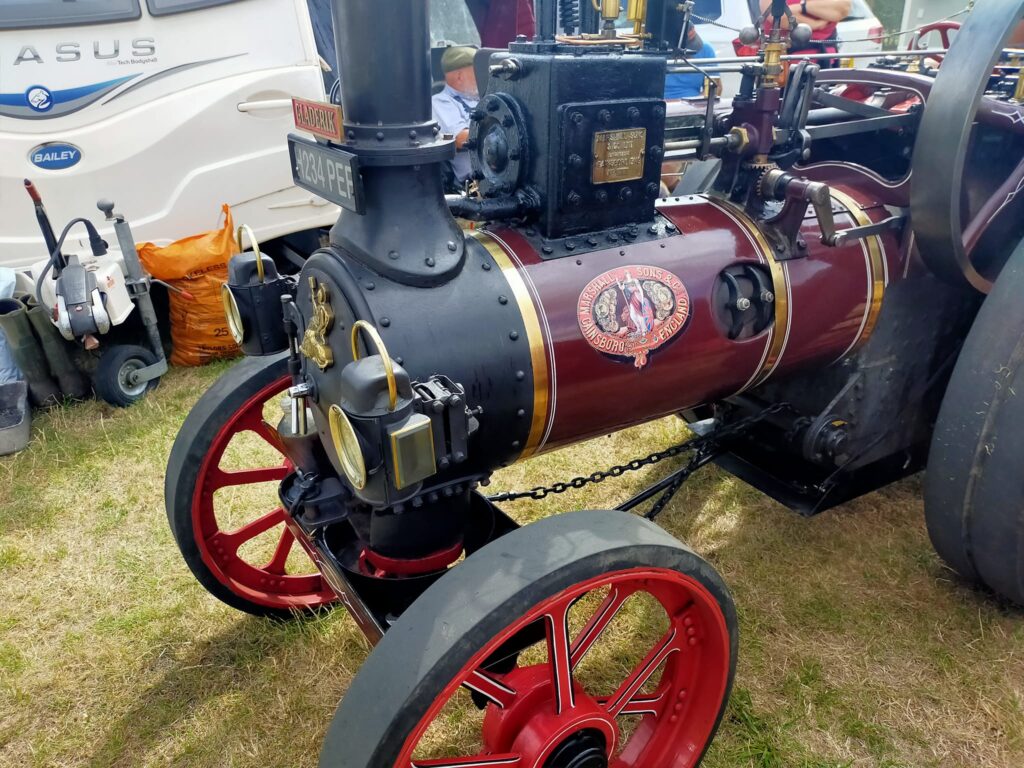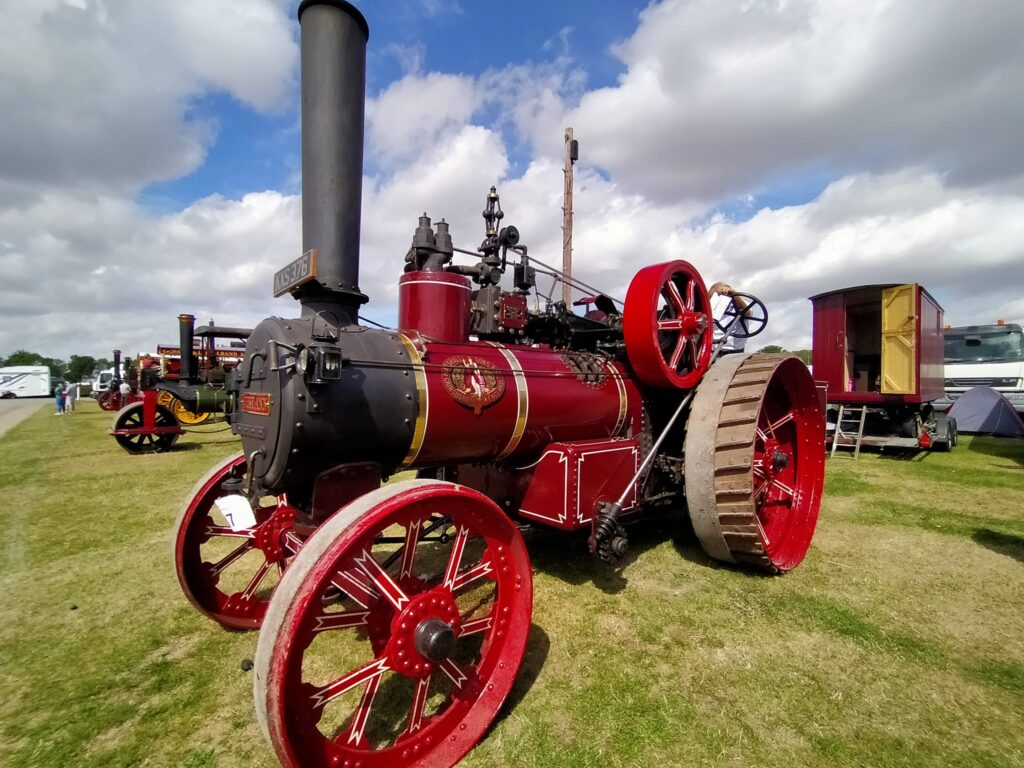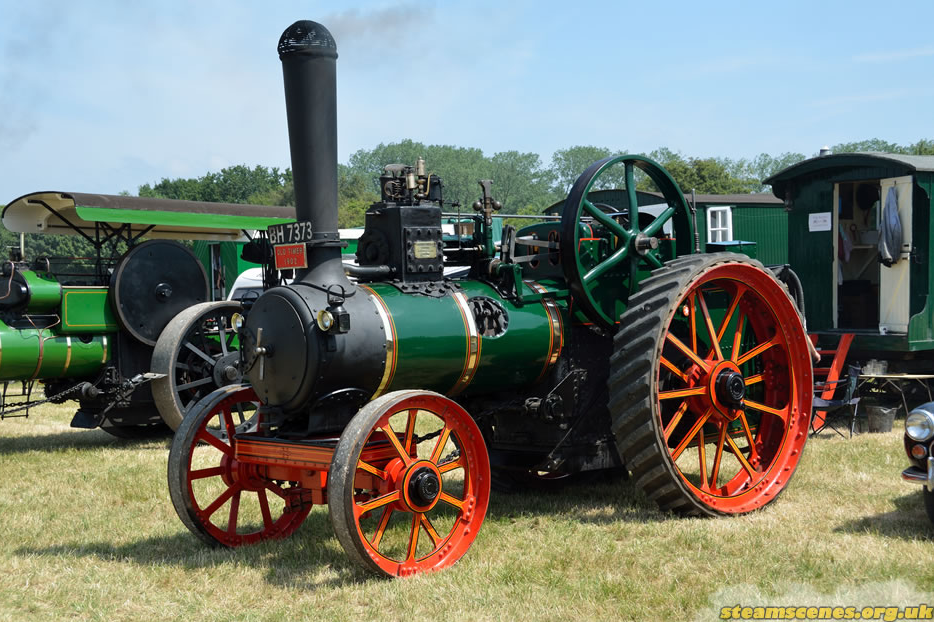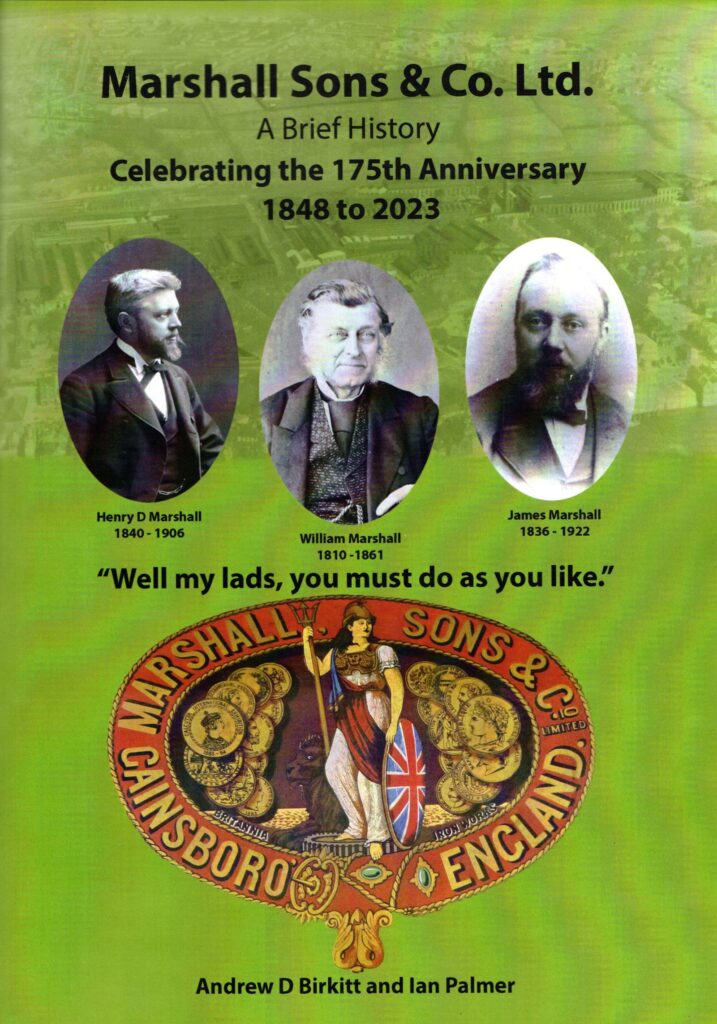Marshall Sons & Company Limited began manufacture of traction engines in 1876 however, prior to their development the portable engine first invented in 1839 for agricultural purposes started the age and use of steam power in this sector. Portable engines ran threshing machines, saw benches and other machinery driven by a belt attached to either the flywheel or the crankshaft pulley. These engines would often still require the power of horses to move them from location to location. Therefore, traction engines were larger and more adaptable engines that could power belt-driven agricultural machinery, haul loaded trailers and for those fitted with a winch they could also extract timber from woodland for example.
In 1876, the Marshall company manufactured, supported by their efficient drawing office their first self-moving under-engine 6 NHP traction engine No. 4912, having the cylinder, motion and drive shafts independent of the boiler structure. In November the second engine No. 5040 was completed and was exhibited at the Smithfield Show. As Marshalls did not have access to Thomas Aveling’s 1871 over-type horn plate patent they no doubt felt that the under-type engine was an acceptable alternate solution. By 1877, the company realised that the under-type design was not being well received by the farming fraternity. By 1879, a letter from Thomas Aveling dated 30th September informed James Marshall that he did not consider their over-type traction engine design any way infringed his 1871 patent.
Marshall Traction Engine (photo from Gainsborough Heritage Archives)
The steam ploughing engine revolutionised farming as large areas of arable farmland could now be cultivated in a relatively short period of time compared with the horse drawn plough implements. The most efficient method of farming land included using a pair of ploughing engines, one at each side of the field, drawing the plough or cultivator by means of a wire rope attached to a winding drum mounted beneath the boiler of each engine.
As the author of this article and passionate about industrial heritage, I was excited to witness the first ever return for one Marshall Traction Engine to the former Britannia Works since it left the factory production line 113 years ago. The 1911 Traction Engine No. 55924 8nhp is owned by Chris and Laura Lawson, originally exported to Western Australia.
Picture above taken by Gemma Clarke on 2 April 2024
Pictures above courtesy of James Chantry (Chantry Agricultural Engineers). The photo above shows No. 55924 inside the current Workshops of Wefco, which were originally the Boiler Mounting Bay, Paint shop and Despatch shop. The first photo shows the engine beneath the Britannia Statue (now Marshall’s Yard).
Traction engines were invented by Thomas Aveling who modified a Clayton and Shuttleworth portable engine in 1859 building the first traction engine. He started a partnership with Richard Porter in 1862 creating a company known as Aveling and Porter based in Strood, Kent. Aveling went on to invent the steam roller in 1867. An article from Berrybrook Steam and Classics mentions how Aveling’s early machine shop was unable to cope with the building of the finished machine, so that led him to work with Clayton and Shuttleworth of Lincoln to make the first traction engine a reality. However, this new industrial development led to the Steam Locomotive Act which restricted the speed of these new vehicles to 4mph in open country and 2mph in towns!
The first traction engine built at the Britannia Ironworks was a 6 n.h.p. engine and during the ten year period 1878 – 87 the factory built 310 traction engines, 71 of which were supplied to overseas customers. Different sizes of traction engines were designed for differing purposes, for example, 5 n.h.p. stroke cylinders built in 1880 were intended for farmers living in hilly districts or where there were narrow country lanes. Marshall’s traction engines were exported to many countries including New Zealand, Austrialia, Brazil and Germany.
Marshall Traction Engine on display (photo from Gainsborough Heritage Archives)
The Marshall traction engine 55924 that visited Gainsborough recently has been fully restored over the last 7 years from a pile of parts, with many parts have to be specially made. The engine is now presented at shows regularly for visitors and enthusiasts to enjoy.
The movement to promote steam preservation started with the National Traction Engine Trust. It began with two people Arthur Napper and his friend Miles Chetwynd-Stapleton who bought engines for their own enjoyment in 1949 but they realised how important it was to preserve the engines, as one day there may be none left. The two men were always joking about their own engines ability which led to a race in 1950. The best thing about this story is that Arthur’s engine a Marshall called ‘Old Timer’ beat his friend’s Aveling engine. The story didn’t stop there as Miles wished for a re-match and it became a competition reported about in the newspapers. In August 1950 the Marshall again beat the Aveling but with an audience of 2,300 people including a reporter from the Daily Mirror and the story went national!
The National Traction Engine and Tractor Association had already been formed in 1893 to voice the concerns of traction engine users across the country with issues such as smoke emissions, taxation and speeding. However, by the 1950s the use of traction engines were in decline therefore, when the association heard the excitement over the Marshall and Aveling traction engine race it began the concept of the traction engine rally as we know it now.
Pictures above taken in 2022 at the Lincolnshire Steam and Vintage Fair by Gemma Clarke
The fantastic Marshall traction engine (Old Timer) winning that first race in 1950 helped to bring about the rise and interest in preserving engines, holding rallies, tractor and traction engine runs and much more. If you would like to see some engines in action in the former Britannia Works, pop along to Marshall’s Yard on Sunday 16 June 2024 (Father’s Day) where there will be many Marshall products on display. The Marshall Club will also be in attendance with their stall that includes many items to purchase!
Picture of Marshall General Purpose Engine, 37690 “Old Timer” built in 1902. Image of this engine taken at Woodcote Rally in 2013. Courtesy of Steam Scenes.
Alternatively, if you would like further information or research on some of Marshall’s made products, the Gainsborough Heritage Centre is open every Tuesday and Saturday 10am to 4pm. The Heritage Centre has a fantastic collection of drawings covering many different products that can help in preserving engines, please contact [email protected] for further assistance.
In addition, for sale at the Gainsborough Heritage Centre, if you are interested in reading more about the history of Marshall Sons & Co, a new booklet has recently been printed to celebrate the 175th anniversary of William Marshall setting up his business in 1848 compiled by Marshall Club Chairman Ian Palmer and Chairman of the Gainsborough Heritage Association Andrew Birkitt. The book costs £10 over the counter or £14 including postage and packing!
References
- Berry Brook Steam and Classics article, Traction Engine History: A Tribute to Thomas Aveling
- The Story of the Britannia Iron Works by Michael R. Lane
- Classic Traction Engines by Paul Stratford
- Britain’s Heritage Traction Engines by Anthony Coulls
- Marshall Sons & Co. Ltd. A brief history, celebrating the 175th anniversary 1848 to 2023 by Andrew Birkitt and Ian Palmer.

